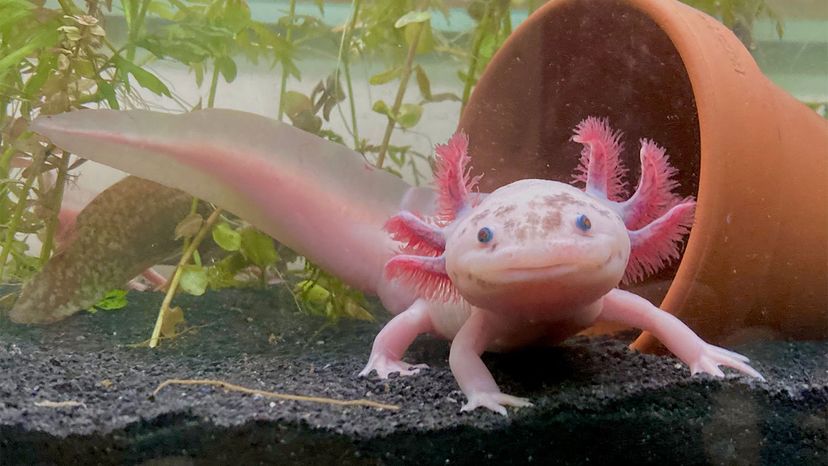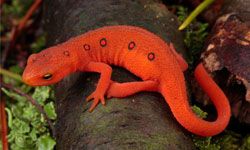In their home ecosystem, axolotls are — or at least used to be — top predators around the lakes, wetlands and canals of central Mexico. They're unusual among amphibians because they remain underwater for their entire lives, breathing through feathery gills, while most other salamander species walk around on land and breathe with lungs during the adult stage of life.
Although they appear unassuming, they're actually ruthless carnivores, feasting on worms, mollusks, insects, insect larvae and even small fish in the wild.
Regenerative Abilities
Part of the Aztec mythology of the axolotl centers around the fact that, like a powerful god, they are difficult to kill. An axolotl can regenerate virtually any body part it loses, no problem. While some lizards can grow back a tail, bisected flatworms can grow back their other half and starfish can regrow a limb, an axolotl can regrow practically any part of its body in a few weeks.
"Of the animals that are closest to us — the vertebrates — salamanders are the only ones that can regenerate in this way, and can heal without scars," said David Gardiner, a professor in the School of Biological Sciences at the University of California, Irvine, when we talked to him in 2019. "Other salamanders can regenerate, but axolotls do it best."
When the Europeans got wind of axolotl regeneration, axolotls went from being a zoo exhibit to one of the most important and longest self-sustaining lab animals in history.
Georges Cuvier, popularly considered the Father of Paleontology, studied axolotls in an attempt to figure out whether Carl Linnaeus was correct in categorizing the classes Amphibia and Reptilia separately. Cuvier concluded that axolotls, because they breathe through gills their entire lives, must be some sort of lizard that existed as a perpetual larva — in the words of paleontologist Stephen Jay Gould, a "sexually mature tadpole." (Cuvier was correct sometimes, but not in this case.)
Because axolotls did incredibly well in laboratory and aquarium settings, 19th-century zoologist Auguste Duméril took it upon himself to provide every lab in Europe with a supply of axolotls, which resulted in some truly horrific studies in which scientists chopped up lab axolotls just to test the limits of their regenerative powers.
Scientific Studies Surrounding Axolotls
Scientists are interested in axolotls because they hope to figure out how to one day apply its miraculous new limb regeneration abilities to the human body. Axolotls can regenerate limbs, heart tissue, eyes and even its spinal cord and parts of its brain, and make new neurons throughout their lives, which human brains do, too, although not as readily.
"These days, axolotls are hugely important model systems for our studies about regeneration," said Gardiner. "We've known for decades — centuries, even — that we can remove parts of a developing embryonic structure and the cells that are left behind will fill in, repair and regenerate that structure. But in most animals — mammals, for instance — the system sort of shuts down at the end of embryonic development. Axolotls and other salamanders seem to be able to revert back to that embryonic-like state, reaccessing the developmental program that's already there. Humans have the program, we just stop being able to access it when we're no longer an embryo. You could say we, like axolotls, have evolved the ability to regenerate just fine, but we've also evolved a mechanism that inhibits that."
It's possible to force an axolotl to metamorphose into an adult salamander without gills by injecting it with iodine or thyroxine, or by feeding it foods that are rich in iodine. However, scientists have found that after they have metamorphosed they don't easily regenerate cells.


